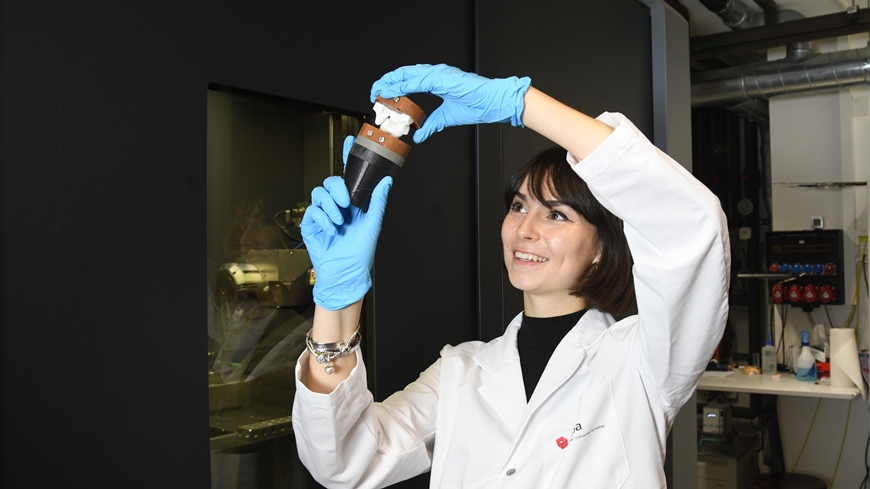Empa Zukunftsfonds
On the trail of spinal diseases
Many people suffer from spinal defects, which are often associated with degenerative diseases. The causes are still largely unknown. To change this, Empa researchers from the Center for X-Ray Analytics are investigating a stabilizing ligament in the spine in collaboration with Balgrist University Hospital in Zurich. The project could recently be launched thanks to a number of private donations.

More and more people are suffering from problems with their spine – especially as they get older. One widespread spinal disorder is lumbar spinal stenosis, which puts pressure on the nerve cords in the spine. The consequences of this can range from severe pain to paralysis. To date, medicine does not know exactly what causes such degenerative diseases.
Initial studies indicate that a ligament between the vertebral arches, the so-called Ligamentum flavum, could play a decisive role in the degeneration of the spine. In a recently launched project, a research team led by Annapaola Parrilli from Empa's Center for X-Ray Analytics, in collaboration with Jonas Widmer from Balgrist University Hospital, wants to investigate this hypothesis in more detail. The project was launched thanks to funding from the Evi Diethelm-Winteler Foundation, the Philipp and Henny Bender Foundation, two other foundations and around 50 private donations.
Analysis under tension
"We are investigating the Ligamentum flavum using various imaging and biomechanical methods to gain a better understanding of how its structure and stability change over time," explains PhD student Raluca Barna, who was recruited to Parrilli's team for this project. For this purpose, real Ligamenta flava donated for research purposes are put under tension in the laboratory. To precisely analyze the structure and composition of the ligament, high-resolution 3D images of the tissue samples are also taken using micro- and nano-computed tomography (CT).
"Our initial tests have already yielded promising data. We are very much looking forward to gaining a deeper understanding of spinal degeneration over the course of the project," says Annapaola Parrilli. Patients suffering from severe back problems can also look forward to this as the findings should lead to a faster selection of a suitable treatment in future.
Research funding through Empa's "Zukunftsfonds"
Empa's "Zukunftsfonds" is seeking private donations for outstanding research projects that are not (yet) supported elsewhere. If you are interested in supporting innovative research, please visit the website of the "Zukunftsfonds": www.empa.ch/web/zukunftsfonds
PD Dr. Annapaola Parrilli
Center for X-ray Analytics
Phone +41 58 765 65 76
PD Dr. Jonas Widmer
Universitätsklinik Balgrist
Head of Spine Biomechanics
Phone +41 44 510 73 43
Loris Pandiani
Empa Zukunftsfonds
Phone +41 58 765 47 03
-
Share






